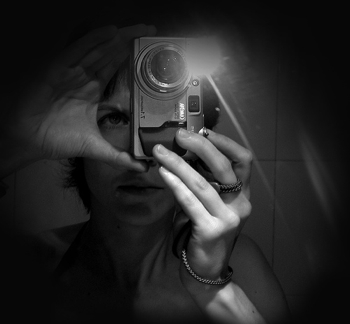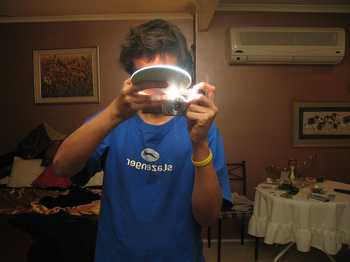Shooting with an In Camera Flash

While I would totally agree that flash photography can blow out a shot with it’s harsh light – there are times where there’s no getting around using it and where (when used correctly) it can actually ‘make’ a shot.
My preference with flash photography is to have dedicated flash that is either on a hotshoe, flash bracket or off camera – however there are plenty of times when all you’ve got at your disposal is the in camera flash. 99% of all cameras have them – so perhaps it’s time we thought about how to get the best results from them.
Here are a few tips:
1. Get In Close

Knowing this should drive you to get in close enough to your subject for the flash to have some impact (usually within 2-3 meters). If you can’t get in close (for example if you’re at a rock concert and are sitting in the back row) you’ll probably achieve better results by turning your flash off and bumping up the ISO setting.
2. Try Slow Sync Flash
Another limitation with in built flash units is that they can produce quite harsh results that mean any other ambient light in a scene is lost. This is partly because the light they produce is unable to be directed/bounced indirectly onto your subject.
One way around this is to use Slow Sync Flash. You can read about this technique in our tutorial on the topic – but in short it involves choosing a slower shutter speed and firing the flash while the shutter is open.
3. Diffuse or Direct Your Flash DIY style

Some photographers I know always have a roll of semi-opaque adhesive tape in their camera bag to put over their flash. This doesn’t stop the flash’s light but diffuses it.
Other friends take a little piece of white card with them which they put in front of their flash to bounce it up or sideways.
Using these techniques might mean you need to play with exposure compensation (you’ll probably want to increase exposure by a stop or two) as your camera won’t be aware that you’re taking some of the power out of it’s light.
4. Fill-in Flash
Don’t just use your flash when it’s dark. Often when shooting outdoors a flash can really lift an image up a notch – particularly when photographing a subject with strong backlighting or one with harsh downward light. A fill in flash lights up shadowy areas. Read more about Fill Flash.



.gif)





